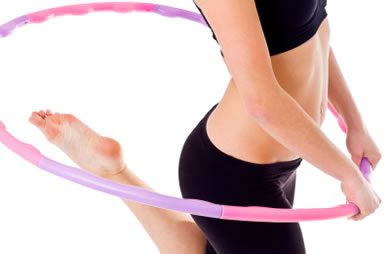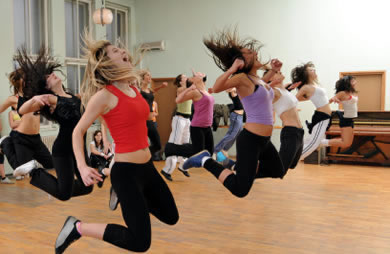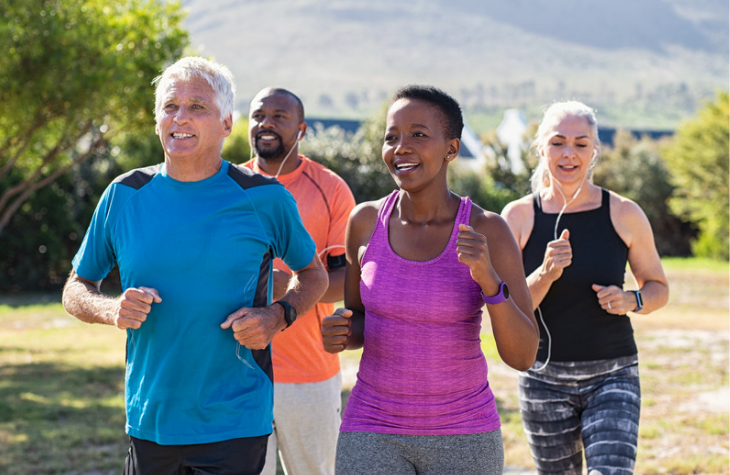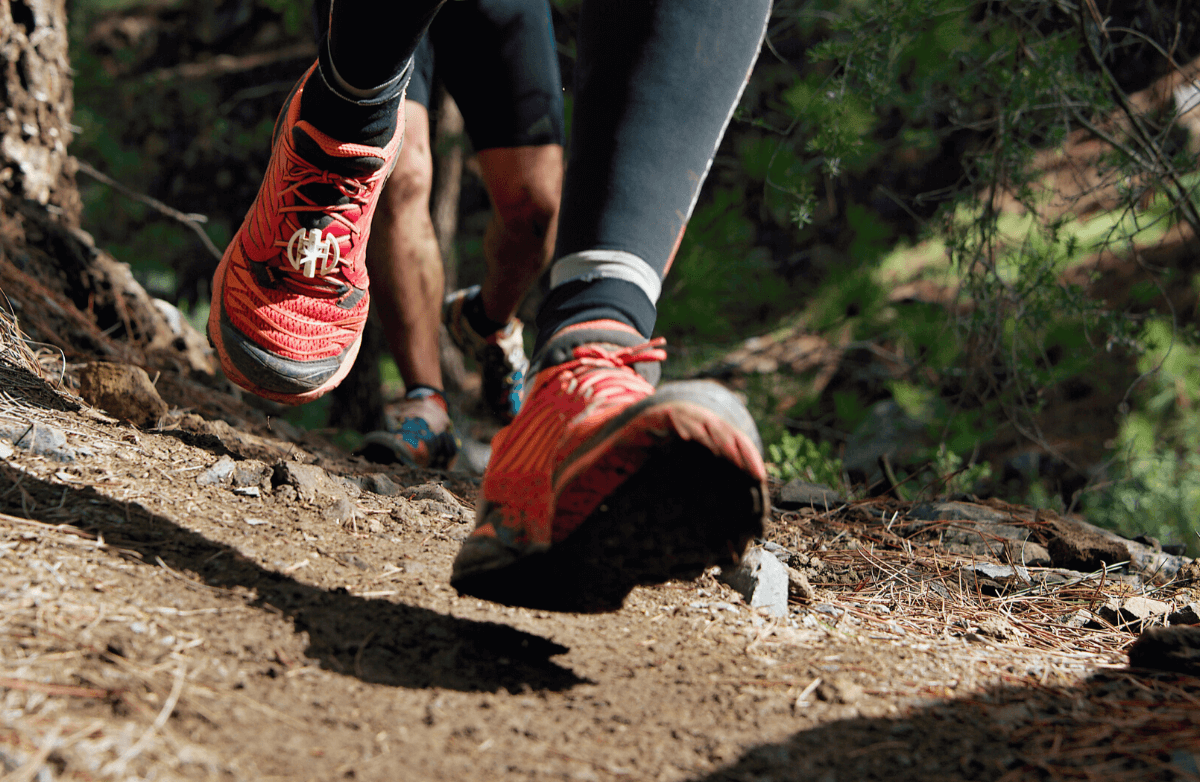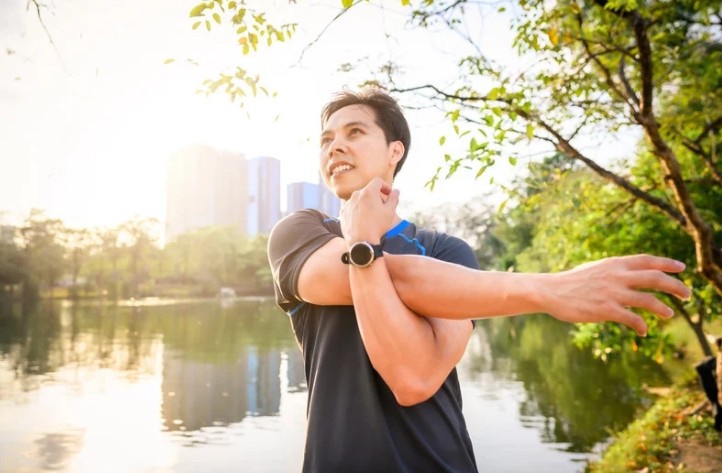While it might sound complicated at first glance, the concept of unilateral training is actually very simple. As the "
But why would you want to do this? Wouldn't you get more muscle-boosting bang for your buck—and save time to boot—by working both sides at the same time? As it turns out, giving each side of our body your undivided attention can be hugely beneficial, according to fitness experts.
5 Benefits of Unilateral Training
1. Balances out your training.
Just as most of us write better with one hand than the other, we all have one side that's stronger than the other. Unilateral training helps to strengthen the "weaker" side
"Because we have dominant sides and muscle imbalances, unilateral training is a great way to balance out strength discrepancies or movement pattern issues, increasing strength in a side that is weaker," notes celebrity trainer Ashley Borden.
Cassy Velez, a personal trainer and health coach,
2. Improves your balance.
When you're working just one side, the body is naturally forced to work harder on balance to compensate for the disparity of weight. "Balance is a very important part of training and life," says Astrid Swan, a NASM-certified personal trainer and Barry’s Bootcamp instructor. "[Unilateral training] forces us to focus, engage and stabilize."
3. Adds an additional core challenge.
The importance of a strong core cannot be overstated, and unilateral training is a valuable tool in helping build a powerful midsection. Tyler
"When you train only one side, your core has to compensate to stabilize, and to do this you must really engage [the abdominal muscles]," Swan adds.
4. Adds more challenge to strength training.
If you want to add some resistance to your strength regimen without carrying a lot of extra weight, unilateral training incorporates an element of challenge without running the risk of a load-bearing injury.
"When
5. Improves functionality for sports performance.
Whether you're a runner, rower or swimmer, certified strength and conditioning specialist Kevin Carlson, certified strength and conditioning specialist, points out that unilateral training can help improve your athletic ability.
"Since most sports are played off one leg at a time – such as running and jumping – it makes sense to train one leg at a time," says Carlson. "Unilateral training has shown to increase strength in the 'unused' side of the body, as well. Training one limb can cause a strength increase in the other limb. This is known as cross-education." As each limb starts to become stronger, Carlson says, your coordination will naturally improve.
7 Unilateral Training Tips for Beginners
You might be excited to start unilateral training, but you don’t have to completely overhaul your existing routine or commit to 100 percent of single-side work. Instead, Spraul recommends thinking of unilateral training as another tool in your toolbox that allows you to change things up.
"I'd recommend starting off simple by substituting one or two unilateral exercises into your regular routine as a test run," he suggests. "If you enjoy the new challenge and like the results that come with it, feel free to increase the weight and volume."
Velez also uses a mix of single and double work into her clients' routines, but she cautions against performing unilateral training too much, especially at the beginning. "It can fatigue and break down your muscle fibers
- Start with what you know. If you've never done single-side work before, Spraul suggests starting with one-arm
variations of exercises that are already familiar to you. "Start small by sprinkling in just one or two unilateral exercises and see how it goes," he advises. - Go
lighter . Velez recommends starting with lighter weights than you'd normally use for bilateral moves. When training unilaterally, you are utilizing fewer muscle groups to pull the weight. "Don't sacrifice your form just to utilize the same weight on both sides," she says. "Use a lighter weight, build your strength and focus on developing balance and synergy across both sides of your body." - Get balance support. When doing single legwork for the first time, Borden says you might want to use a wall or
another sturdy surface for stability. "Try to use as little contact as possible to challenge your balance while still staying safe," she says. You could also use a bench to lower into when doing single-leg squats. Velez also likes using TRX straps during unilateral exercises, as they're easy to hold onto for balance while doing single-leg lunges or squats. For upper-body work, consider performing the exercises from a seated position at first. - Take it slow. "I advise my clients to slow down their pace so they can really focus on the muscles they are working," says Swan. "Always make sure that your core is engaged and your form is correct." You can slowly speed up the exercises as your body gets accustomed to the extra challenge of working one side at a time.
- Get help. Whatever type of unilateral training you're starting with, Carlson suggests consulting with an expert who can provide some guidance, such as a personal trainer, strength coach or physical therapist. This will ensure that you're using proper form and choosing the right amount of weight, which will help to prevent injury.
- Focus on the mind-muscle connection. "As you're performing the movement, focus on the main muscle you're utilizing and make sure you're not compensating with any synergist muscles," says Velez.
- Do full reps. As Swan points out, sometimes the "weaker" side may not want to fully extend. Focus on completing a full range of motion for each repetition.




